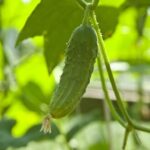Landscaping around trees is an essential aspect of creating a visually appealing outdoor space. It not only adds to the overall beauty of your yard but also contributes to the health and well-being of the trees. This article will provide you with various landscape ideas, tips, and techniques to enhance the area around your trees, including choosing the right flora, preparing the soil, adding decorative elements, and incorporating functional design.
When it comes to landscaping around trees, there are several factors to consider in order to ensure a successful outcome. From selecting the right trees for landscaping to maintaining their long-term health and growth, each step plays a crucial role in achieving a beautiful and sustainable landscape design.
In this article, we will explore the importance of landscaping around trees and provide valuable insights on how to choose the right types of trees for your specific needs. We will also discuss various techniques for preparing the soil, adding decorative elements, selecting complementary plants and flowers, creating pathways and walkways, installing lighting features, and maintaining landscaped trees for lasting beauty and appeal.
Choosing the Right Trees for Landscaping
Landscaping around trees can greatly enhance the beauty and functionality of your outdoor space. However, the success of your landscaping efforts will depend greatly on choosing the right trees for your specific needs. When selecting trees for landscaping, it’s important to consider factors such as the tree’s size, growth habits, and environmental needs.
One important consideration when choosing trees for landscaping is their ultimate size. Some trees may start out small, but have the potential to grow large over time. It’s important to select trees that will fit well within the space you have available and will not encroach on other elements of your landscape design. Additionally, consider the tree’s root system and whether it has a reputation for causing damage to hardscape features like sidewalks and driveways.
Another important factor to consider when selecting trees for landscaping is their growth habits and maintenance requirements. Some trees may have dense foliage that creates a lot of shade, while others may have delicate branches that are more prone to breakage. Choose trees that align with your desired aesthetic and are well-suited to the level of maintenance you are willing to provide.
Lastly, take into account the environmental needs of the trees you are considering for your landscape. Some trees may require full sun, while others thrive in shady areas. Additionally, consider factors such as soil moisture levels and climate suitability when selecting trees for landscaping around your property.
By carefully considering these factors and doing research on different types and varieties of trees, you can make informed decisions about which trees will best suit your landscaping needs. With the right choices, you can create a beautiful and functional landscape design that enhances the natural beauty of the trees on your property while complementing other elements of your outdoor space.
Preparing the Soil
When it comes to landscaping around trees, one of the most important aspects to consider is the soil. The right soil can ensure proper drainage and nutrient availability for the tree, which is essential for its health and growth. Here are some tips for preparing the soil around trees:
- Test the soil: Before making any changes or additions to the soil around your trees, it’s important to test it to determine its pH level and nutrient content. This will help you understand what adjustments need to be made.
- Improve drainage: If your soil has poor drainage, consider incorporating organic matter such as compost or peat moss to improve its structure and ability to drain excess water. You may also need to create a small slope away from the base of the tree to encourage water runoff.
- Add nutrients: Depending on the results of your soil test, you may need to add specific nutrients such as nitrogen, phosphorus, or potassium. Fertilizers can be used to adjust nutrient levels and ensure that the tree has access to everything it needs for healthy growth.
Properly preparing the soil around trees is crucial for creating a favorable environment that supports their growth and overall health. By following these tips and ensuring proper drainage and nutrient availability, you can lay a solid foundation for successful landscaping around trees.
Remember that before undertaking any major landscaping project around trees, it’s always best to consult with a professional landscaper or arborist who can provide specific guidance based on your unique landscape and tree species. With careful planning and attention to soil preparation, you can create a beautiful and thriving landscape around your trees that enhances the overall beauty of your outdoor space.
Adding Mulch and Decorative Rocks
When it comes to landscaping around trees, adding mulch and decorative rocks can significantly enhance the aesthetics of the tree base. Mulch not only adds a polished look to the area but also provides many benefits. It helps retain moisture, control weeds, and regulate soil temperature, which are all crucial for the health of your tree. Additionally, decorative rocks offer visual interest and texture to the landscape while providing a natural barrier to keep weeds at bay.
When selecting mulch, consider options such as shredded bark, wood chips, or pine straw. These materials not only look aesthetically pleasing but also break down slowly, providing nutrients to the soil over time. On the other hand, decorative rocks come in various colors, shapes, and sizes, allowing you to create a custom look that complements your overall landscape design.
Incorporating these elements not only enhances the appearance of your tree base but also promotes its well-being. By improving moisture retention and providing necessary nutrients, mulch and decorative rocks play an essential role in maintaining a healthy environment for your trees.
| Benefits of Mulch | Types of Decorative Rocks |
|---|---|
| Retains moisture | River rock |
| Controls weeds | Mexican beach pebbles |
| Regulates soil temperature | Lava rock |
Selecting Plants and Flowers
Selecting the right plants and flowers to complement the beauty of your trees is an important aspect of landscaping. The right combination can enhance the overall visual appeal of your outdoor space and create a harmonious natural environment. When choosing flora to plant around trees, consider factors such as light exposure, soil type, and moisture levels to ensure optimal growth and accentuation of the tree’s features.
Here are some suggestions for plants and flowers that can be used to accentuate the beauty of trees in your landscape:
- Hostas: These shade-loving plants come in a variety of colors and sizes, making them a versatile choice for landscaping around trees.
- Impatiens: Known for their vibrant blooms, impatiens thrive in shaded areas and are perfect for adding pops of color around tree bases.
- Ferns: With their delicate fronds and lush foliage, ferns bring a touch of elegance to the base of trees while thriving in shady, moist conditions.
- Begonias: These low-maintenance plants come in a range of sizes and colors, making them an excellent choice for adding visual interest around trees.
- Astilbe: This perennial flower offers feathery plumes in shades of pink, red, or white, adding texture and color to shaded areas.
By carefully selecting plants and flowers that thrive in the specific conditions around your trees, you can create a visually stunning landscape that highlights the natural beauty of the trees themselves. Whether you prefer a lush green backdrop or bursts of colorful blooms, there are plenty of options to choose from when designing your landscape with complementary flora around trees.
Creating Pathways and Walkways
Creating a functional and aesthetically pleasing landscape around trees involves incorporating pathways and walkways that complement the natural beauty of the tree while also serving a practical purpose. Whether it’s for providing access to other areas of the yard or simply creating a visually appealing feature, there are various considerations to keep in mind when designing pathways around trees.
Material Selection
When it comes to creating pathways around trees, choosing the right materials is crucial. Options such as gravel, stepping stones, or even landscaping pavers can all be great choices depending on the overall look you want to achieve. It’s important to consider factors such as durability, maintenance requirements, and how well the chosen material will blend with the surrounding landscape.
Curved vs. Straight Pathways
Another important consideration when incorporating walkways around trees is whether to opt for curved or straight paths. Curved pathways can add a sense of whimsy and flow to the landscape, while straight paths create a more formal and structured look. The choice between the two largely depends on your personal preference and the overall style of your outdoor space.
Integration With Surrounding Features
Incorporating pathways around trees should also take into account how they integrate with other landscaping features in your yard. Whether it’s connecting different areas of your garden or leading to a focal point such as a water feature or seating area, thoughtful placement of walkways can greatly enhance the overall design of your outdoor space.
By carefully considering material selection, pathway shape, and integration with existing features, you can create functional and visually appealing walkways that enhance the beauty of trees in your landscape. This not only adds value to your property but also creates an inviting environment for both residents and visitors alike.
Installing Lighting Features
Benefits of Tree Lighting
Adding lighting features to your landscape around trees can provide several benefits. Not only does it enhance the visual appeal of your outdoor space at night, but it also increases safety and security by illuminating paths and potential hazards. Additionally, tree lighting can create a warm and inviting ambiance for outdoor gatherings or simply enjoying the scenery after dark.
Types of Tree Lighting
There are various options to consider when it comes to illuminating trees in your landscaping. From string lights and spotlights to solar-powered fixtures, the choice of tree lighting depends on the size and shape of the tree, as well as your desired aesthetic. String lights wrapped around branches can create a magical effect, while spotlights strategically placed at the base or top of a tree can highlight its natural beauty.
Tips for Installing Tree Lighting
Before installing lighting features around trees, it’s important to carefully plan the placement and type of fixtures. Consider using energy-efficient LED lights to minimize electricity usage and ensure durability. It’s essential to avoid damaging the tree during installation, so opt for gentle attachment methods such as clips or straps. Be mindful of the natural growth patterns of the tree and adjust lighting as needed to accommodate any changes in shape or size over time.
Maintaining and Caring for Landscaped Trees
Once you have designed and executed your landscape ideas around trees, it’s important to ensure the long-term health and growth of the trees. Proper care is essential in preserving the beauty of the landscaped area and nurturing the trees to thrive. One important aspect of maintenance is regular watering, especially during dry spells or drought conditions. Providing enough moisture will help the trees stay healthy and vibrant.
Additionally, pruning is a crucial part of caring for landscaped trees. Regular pruning helps improve tree structure, removes dead or diseased branches, and encourages new growth. It also helps in maintaining an attractive shape and preventing potential hazards caused by overgrown branches. When pruning around landscaped areas, it’s important to be mindful of any other plants or flowers that may be growing nearby.
Fertilizing is another key component in maintaining healthy landscaped trees. Depending on the tree species and soil conditions, a proper fertilization schedule should be established to ensure that essential nutrients are available for the trees. This will support their overall health and encourage steady growth while enhancing the visual appeal of the landscape design.
| Maintenance Tips | Benefits |
|---|---|
| Regular watering | Ensures healthy, vibrant trees |
| Pruning | Improves tree structure, removes hazards, encourages new growth |
| Fertilizing | Supports overall health, enhances visual appeal |
Conclusion
In conclusion, landscaping around trees can greatly enhance the beauty and functionality of your outdoor space. By carefully selecting the right trees for landscaping, preparing the soil with proper drainage and nutrients, adding mulch and decorative rocks, selecting complementary plants and flowers, creating pathways and walkways, installing lighting features, and maintaining the landscaped area, you can create a stunning and inviting landscape that showcases the natural beauty of trees.
One key aspect of successful landscaping around trees is to carefully consider the overall design and how each element can work together to create a harmonious and visually appealing landscape. From the type of trees chosen to the selection of plants and flowers, every decision should be made with the goal of enhancing the natural beauty of the trees while also adding interest and functionality to the space.
By implementing these landscape ideas around trees, you can transform your outdoor space into a peaceful oasis that not only highlights the beauty of your trees but also provides an inviting environment for relaxation and enjoyment. Whether it’s creating a serene garden under a canopy of branches or designing a pathway that winds through a wooded area, thoughtful landscaping around trees can bring new life to your outdoor space.
Frequently Asked Questions
What Is the Best Way to Landscape Around Trees?
The best way to landscape around trees is to create mulch beds or plant shade-friendly ground cover. Mulch helps retain moisture and suppresses weeds, while also protecting the tree’s roots. Planting shade-tolerant flowers and shrubs can also enhance the area around a tree, as long as it does not compete with the tree’s root system.
What Looks Good Around a Tree?
Various options can look good around a tree, including plants such as hostas, ferns, astilbe, or even ground covers like periwinkle or pachysandra. These types of plants not only complement the tree visually but are also suitable for the shaded environment created by the tree’s canopy.
What Is the Best Edging for Around a Tree?
When it comes to edging around a tree, materials that allow some flexibility are generally best since they can accommodate any growth from the tree’s roots. Plastic or metal edging that can be easily adjusted as needed without causing damage to the tree’s trunk or roots would be the most suitable.
Additionally, natural alternatives like stones or brick could also work well and add aesthetic value to the landscaping.

Welcome to my gardening blog! I am passionate about plants and enjoy sharing my knowledge and experiences with others. In this blog, I will write about everything related to gardening, from tips on how to get started to updates on my own garden projects.





